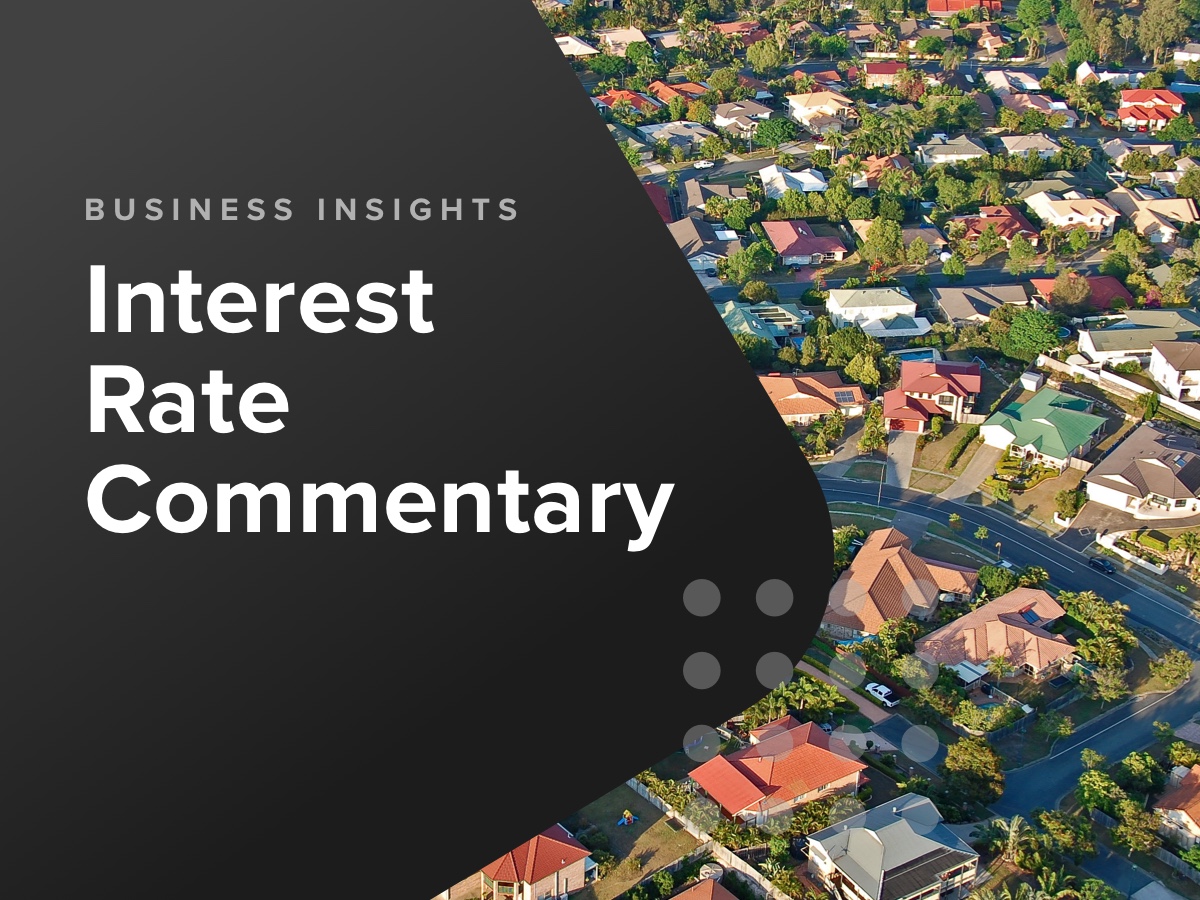The Personal Property Securities Register (PPSR) is an essential facility for all businesses leasing or selling goods or services on credit. But it is also widely misunderstood by small business owners. In this episode of Business Insights, Paul Mead, PPSR Sales Specialist (NSW) and Jason Sutherlin, PPSR Sales Specialist (Victoria) discuss the essential elements to consider when registering assets on the PPSR.
Key points:
- The purpose of the PPSR
- Why searching on the PPSR is important for businesses
- Types of property not covered
- Key considerations for businesses when registering personal property on the register
- Why it is important to register within set time frames the different types of property
Read more on how to protect your assets using the PPSR here.
INTERVIEW TRANSCRIPT
Hello, and welcome to the CreditorWatch Business Insights podcast. I’m Michael Pollack, Head of Content at CreditorWatch and I’m pleased to say that today I am joined by Paul Mead, who is the PPSR Sales Specialist for New South Wales, and Jason Sutherlin who is our PPSR Sales Specialist for Victoria. Welcome gents.
Paul and Jason:
Hi Michael
Michael:
So, you your job titles kind of give it away. We’re here today to talk about all things PPSR, which obviously is extremely relevant at the moment given the uncertain trading environment that so many businesses find themselves in, due to the ongoing effects of COVID. We’ve had the impacts of the New South Wales and Queensland floods and to a lesser extent the impacts of the war in Ukraine as well. PPSR obviously, is a misunderstood area of risk management. So, I guess we’ll just start off with you, Jason. If you could please give us an outline of what PPSR is, and what its purpose is.
Jason:
Sure Michael. PPSR stands for Personal Property Securities Register. The PPSR, in essence, allows businesses to register the financial interests over their clients that they hold. If their customer falls over, goes into administration or liquidation. They are then able to be a secured creditor and able to exercise their interest to recover their goods or proceeds of their business dealings.
Michael:
Paul, what type of businesses is it for, and why is searching on the PPSR so important for businesses?
Paul:
Yeah, great question Michael. I think as you touched on at the start, it really is just one of the most underutilised and misunderstood tools that Australian businesses can use. Really, it can be used by almost every business in Australia. And it can be the simplest way to protect yourself if your customers go under.
There are some exceptions, but as I said, it can be used by anyone. Really, what we see is the most common industry verticals that use it are wholesale trade, the finance industry’s the biggest user of PPSR, retail, business, manufacturing, construction, hospitality and logistics. If you can think of it basically, they can use it.
Searching the PPSR I think again, is one of the most underutilised parts of the credit process. It really gives you the most complete picture of who the secured creditors of a business are, and it can really highlight some important things or risks to consider with potential customers. It can tell you if a business is supplier shopping, if a business is being knocked back for say tier-one finance and if they’ve got a potentially bad credit rating. But they could be shopping around for second-tier finance companies as well. So, it gives you a complete picture. It tells you what is registered against them. It gives you the contact details of who the secured creditor is. So, it really goes through a lot of a lot of detail.
Michael:
Great. So, I think our listeners would be interested to know what types of personal property it does cover and what it doesn’t cover. Can you just give us some insight there, please?
Jason:
Sure, Michael. So PPSR primarily only covers personal property. It doesn’t cover real property such as land, buildings, fixtures on land, water rights or government issued licenses. That’s the real distinction between the two.
Michael:
Okay, and so what types of personal property doesn’t it cover?
Jason:
I guess the way to think about personal property is really anything that you can pick up and move. So biggest the registration type on the PPSR is wholesale trade, so this is supplying goods to other businesses on credit terms. Any time a bank supplies a personal loan for someone to go out and get a car. You see, that’s another big registration type on the PPSR. So, it really is that financial interest that is being registered on PPSR. They’re the common types.
Michael:
Okay. So, the PPSA which is the act that the PPSR is based on, provides strict timeframes for registering property. So why is it so important to register within these set timeframes for different types of property?
Paul:
Yeah, so you touched on it there, Michael. The PPSA, so the act that sits under the PPSR, they’ve set out those really strict timeframes, and I guess it’s been done to protect not only the secured creditor, but also the business that you’re registering against.
The reason it’s important is if you don’t register within those timeframes, and obviously you’re doing it to protect yourself, you’ll miss out completely with a registration because administrators can be quite tough and run by the letter of the law and if you don’t register in that timeframe, it invalidates your registration.
So, I think some of the simplest ways to look at it is if you’re supplying a good, that’s classified as inventory or defined as inventory on the PPSR, you basically need to do it when you’re supplying that piece of inventory to the customer. So CreditorWatch has some really good tools to help you do that and alleviate the stress that might come with registering, but it’s important to make sure that customers or businesses are aware of when they should be registering and make sure they do it in time to avoid having an invalid registration.
Michael:
So, what are some of the other key considerations that people should have in mind when they’re registering their personal property?
Jason: It’s probably really broken down into two parts Michael. So firstly, registering security interests. It’s created by having a security agreement. So, referring back to a client or a customer’s terms and conditions or clauses in their contracts, which then allows them to proceed ahead with that.
The real key kind of advantage in using CreditorWatch via PPSRLogic is it’s able to really assist you in that area in keeping it succinct and making sure that it’s a valid registration. That’s where a lot of customers go wrong is they don’t have things in place to make sure that it’s valid. The other considerations are levels of risk and potential exposure. They vary in different industries, but certain industries are higher risk than others. So, there are obviously other important factors to the mix.
Michael:
Okay. Can you just take us through what a purchase money security interest or PMSI is? Now this can sometimes override the PPSR. So, could you just take us through the differences between a PMSI and a PPS registration?
Paul:
Yeah, well, Michael, a PMSI is just a type of PPS registration. So, it’s a registration that gives you super priority on the PPSR itself. So, if you’re a supplier of physical goods, and you’re supplying those goods to your customer, and you want to enforce that retention of title, and you’re funding part of the purchase price of that particular good or that stock or equipment, you may classify and are qualified to have a PMSI.
The benefit of having a PMSI is that, as I said, you get that super priority. So, you sit at the top of the queue. And it means in almost all cases that the administrator won’t liquidate that asset to pay on other secured creditors. You can enforce your retention of title and, yes, as I said you are higher up the queue.
Michael:
Thanks for clarifying that, Paul. So, CreditorWatch has a great tool for registering interests in our PPSRLogic platform. Can you just take our listeners through how it works and the features of it?
Jason:
Definitely. When we speak to our clients, I guess one of the biggest frustrations is the complexity and the difficulty in trying to register it and to do it. Anyone that may have done it through other means, such as the government website in the past, it can be extremely difficult, and they may get issues if they don’t have things filled in correctly.
They can get all the way to the end, and they may not have a valid registration. It is not until you have to act on that registration that you can sometimes find out that there is in fact, issues with that. Largely that probably comes from the fact that the PPSR was set up some 10 years ago now. With CreditorWatch, our platforms really been designed to simplify the process, make it easy for people to use, with that insuring obviously compliance and valid registrations.
The advantage with PPSRLogic, is it does integrate with CreditorWatch and our online application form product, ApplyEasy, which makes it a seamless process – it’s a matter of a couple of clicks for the customer to have a valid registration. With the portal access we’re also able to help them manage all their registrations and provide email alerts in real time as and when transactions are about to expire.
Michael:
Okay, great. So, Paul, if a customer has an interest in our PPSR offering, can you just take us through the journey from go to whoa, and how we can help them in that regard?
Paul:
Yeah, absolutely Michael. So, I think with PPSR there’s definitely a few steps involved before you actually get to the registration stage. So first and foremost, we touched on this earlier, is making sure that you’ve got a valid and proper security agreement in place with your customers. So, what that means is having the relevant wording in your credit application or contracts that you supply to your customer, and as we touched on, we can assist you with getting that set up and properly integrated into your client onboarding process.
Once that’s done, the great thing about CreditorWatch is we can assist you with access to the platform, creating what we call the secured-party group, which I’ve just identified as a business administering party on the PPSR and then working through your templates to help streamline the registration process. We also help with the management of the registrations and make it easy to search and address any gaps you may have with existing registrations as well.
Michael:
Excellent. Thanks very much for joining us today. That was some great info you shared with us. Now if you would like some more information on PPSR and our PPSRLogic tool, you can find that at PPSRLogic.com.au. You can also register there for a free demo from Jason or Paul. And we also have some eBooks and some other great resources there.
Gents thank you very much for your time today.
Paul and Jason:
Thanks for having me. Thanks, Michael.
Michael
And we’ll see you next time. Thank you for listening. Bye for now.



